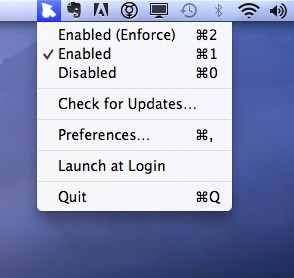


The standard cursor when you type in iOS usually jumps after each character. It’s almost as if the cursor is “sliding on ice.” Flame Jailbreak for iOS 13 The Smooth Cursor tweak gives a smooth animation as you enter characters on the screen. If the classic look of Cydia wasn’t to your liking. It lets you customize the Cydia app interface with various options to configure Cydia’s appearance and functionality. AVLockĪVLock is a Cydia tweaks compatible with iOS 11.3.1 Jailbreak. It is used to add the rotation lock button in the video player interface of iOS 11, which makes it quite convenient. It attempts to make watching videos more tolerable on the iOS platform.ĭon’t miss: Tether your Laptop with an iPhone and PdaNet AppDrawerĪppDrawer is a Cydia tweaks compatible with iOS 10 Jailbreak. It is a unique feature of Android, where all of your installed apps appear when you bring it up. 3D pointing track before (blue) and after (dashed) applying a variable rate particle filter. User is targeting two GUI icons (target 1 is the blue circle and then target 2 is the green circle). On the other hand, unintentional situational-induced-impairment- related pointing finger movements in 3D are successfully removed in Figure 6. Figure 4 exhibits the confidence ellipses obtained from the sequential Monte Carlo filter, which has visibly removed the health-induced-impairment jumping behaviour of the mouse cursor position and can assist identifying the user's intended destination (despite the ambiguity of the raw pointing data). The raw cursor movement data in figures 4 and 5 is for a user that suffers from cerebral palsy. Whereas, in figure 5 Kalman filtering is applied. Figures 4 and 6 illustrate the ability of a sequential Monte Carlo method, namely the variable rate particle filter, to remove highly non- linear perturbation-related unintentional pointing movements when interacting with a touchscreen using pointing gestures in 3D and selecting icons of a GUI displayed on a computer screen via a mechanical mouse. Therefore, the predictive display system that uses a suitable Bayesian formulation can significantly simplify and expedite on- screen target acquisitions via free hand pointing gestures. Measured durations of pointing task also show that í µí± í µí± can be reduced by over 35% under mild to severe accelerations-vibrations due to the road conditions (e.g., driving on a badly maintained road). It can also be noticed that workload notably increases as more perturbations are experienced.

Figure 3 demonstrates that the predictive display system can reduce the subjective workload of interacting with an in-car display by nearly 50%. This pointing facilitation scheme is dubbed mid-air selection (9). The predictive display auto-selects the intended on-screen icon once a particular level of prediction certainty is achieved (the user need not touch the display surface to make a selection). Pointing finger observations are then used by the probabilistic intent predictor to calculate the probabilities í µí²«(í µí±¡ í µí± ) in Equation 1. In this study, a Leap Motion controller is employed to produce, in real- time, the locations of the pointing finger in 3D, i.e., í µí°¦ í µí± = ′ at í µí±¡ í µí±. NASA TLX forms, widely utilised in HCI studies, are used to evaluate the subject workload experienced by the users. The benefits of the predictive display are assessed in terms of the system ability to reduce the workload of interacting with the in-car touchscreen and the pointing tasks durations í µí± í µí±. In the former case, the experiment becomes a conventional task of interacting with an in-car touchscreen where the user has to physically touch the intended icon on the screen to select it. Figure 3 depicts results of utilising an in-vehicle predictive display under varying levels of SIID due to road/driving conditions when the predictive capability is off and on. The effectiveness of the state-space-modelling for removing unintentional impairment- related pointing movement were demonstrated in (8,19,20,25,33,34). The filtered track is subsequently used by the destination inference module. However, in certain scenarios (e.g., severe perturbations) where it is desirable to maintain a simple linear motion model for the intent inference functionality, a pre- processing step/stage can be added such that the raw pointing data is filtered, e.g., using a particle filter (20,25). results of the í µí± statistical filters applied to determine í µí²«(í µí±¡ í µí± ) in Equation 1 can be employed to remove the unintentional perturbations- impairment-related movements as shown in (8,34).


 0 kommentar(er)
0 kommentar(er)
